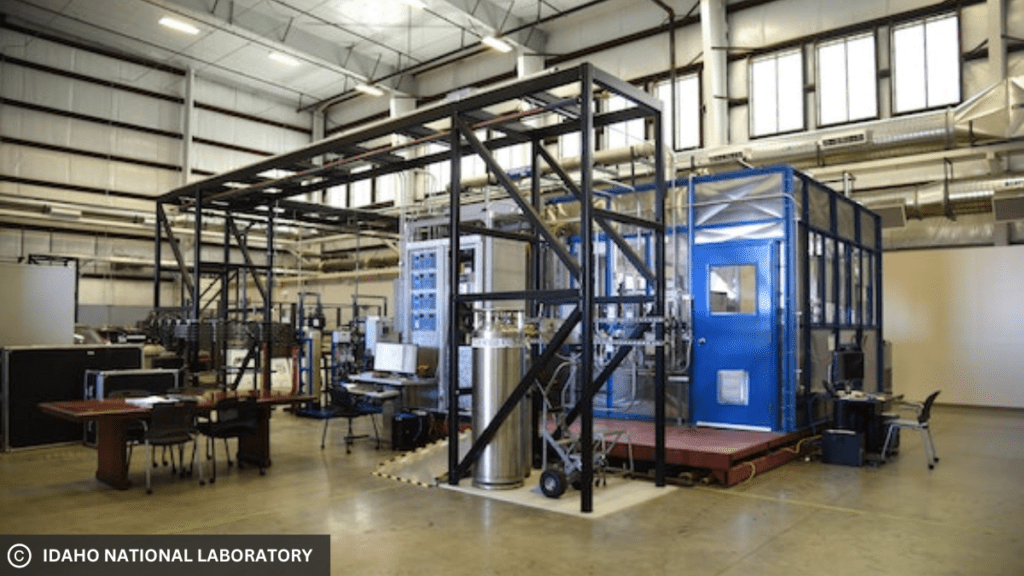
Hydrogen, the simplest and most abundant element in the universe, is vital for any number of industries, from fertilizer production to metal manufacturing and from petroleum refining to chemical synthesis.
Hydrogen is also an excellent way to store energy for electricity generation or to power vehicles.
But the most common way to produce hydrogen — steam methane reforming — relies heavily on natural gas and produces carbon dioxide, one of the chief greenhouse gasses contributing to climate change.
To wean hydrogen production off fossil fuels, U.S. companies are investing in technologies that use energy produced by low-emission nuclear reactors and renewable energy sources to produce hydrogen. One of those technologies, high-temperature electrolysis, can use electricity to split the steam emitted from a nuclear reactor into hydrogen and oxygen.
With 20 years of support from the U.S. Department of Energy, a team at Idaho National Laboratory has developed a new capability dedicated to helping U.S. companies scale up production and drive down costs of hydrogen produced by high-temperature steam electrolysis technologies. In particular, INL’s hydrogen laboratory is designed to support the development and testing of steam electrolysis technologies and systems from multiple companies, proving their performance and safety.
INL’s team features leading materials scientists and engineers in the field of electrolysis and hydrogen fuel cell development.
“INL is the premier laboratory for demonstrating high-temperature steam electrolysis in the nation,” said Shannon Bragg-Sitton, director for INL’s Integrated Energy and Storage Systems Division. “If you want to demonstrate high-temperature, highly efficient hydrogen generation, you come to Idaho.”
ADVANTAGES OF HIGH-TEMPERATURE ELECTROLYSIS
Producing hydrogen with high-temperature steam electrolysis has a number of advantages: it requires no natural gas, it produces no carbon, and it achieves higher efficiencies than the low-temperature electrolysis options.
Besides nuclear reactor thermal energy, steam can also be generated from the waste heat emitted by other industrial sources, which could reduce both the energy needed from the nuclear reactor and the cost of hydrogen.
Producing hydrogen from high-temperature steam and electricity is also highly efficient. “High-temperature electrolysis has a 20 to 25% higher efficiency than low temperature electrolysis (generating hydrogen from electricity and water) — especially if you use the high-temperature heat and electricity supplied by a clean energy source like nuclear,” Bragg-Sitton said.
ENABLING COMPANIES TO TEST TECHNOLOGIES
INL is the research arm and testing laboratory for several companies developing high-temperature electrolysis technologies.
The hydrogen team has set up several hydrogen production test platforms at INL’s Energy Systems Laboratory that enable companies to evaluate their technologies…
IMAGE (above): INL’s High-Temperature Steam Electrolysis system. Credit: Idaho National Laboratory.





